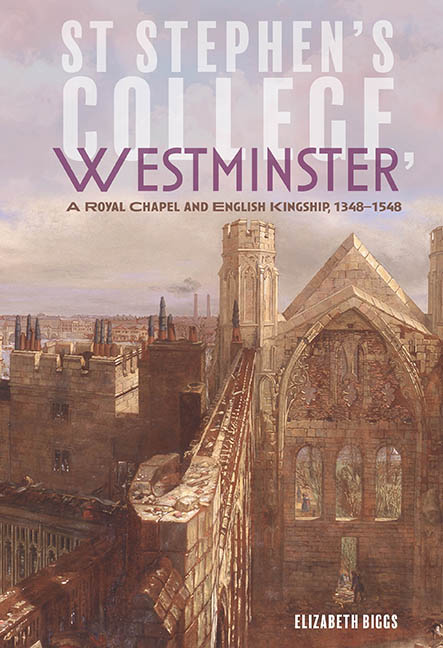Book contents
- Frontmatter
- Contents
- List of Illustrations
- Acknowledgements
- List of Abbreviations
- Preface
- Introduction
- 1 Finding a Place Within Westminster, 1348–1394
- 2 Magnificence and Difficulties under Richard II, 1377–1399
- 3 Weathering Political and Economic Storms, 1399–1485
- 4 A New Kind of Court? Display, Pageantry and Worship, 1471–1536
- 5 Responding to the Reformation, 1527–1548
- Conclusions
- Bibliography
- Index
- Miscellaneous Endmatter
2 - Magnificence and Difficulties under Richard II, 1377–1399
Published online by Cambridge University Press: 28 April 2020
- Frontmatter
- Contents
- List of Illustrations
- Acknowledgements
- List of Abbreviations
- Preface
- Introduction
- 1 Finding a Place Within Westminster, 1348–1394
- 2 Magnificence and Difficulties under Richard II, 1377–1399
- 3 Weathering Political and Economic Storms, 1399–1485
- 4 A New Kind of Court? Display, Pageantry and Worship, 1471–1536
- 5 Responding to the Reformation, 1527–1548
- Conclusions
- Bibliography
- Index
- Miscellaneous Endmatter
Summary
Richard II, the second English king to be the patron of St Stephen's College, shaped its relationship with kingship, royal administration, the household and the wider built environment of the Palace of Westminster. His relationship with the college was mixed and often ambivalent, depending on whether the college met his own priorities and interests. During his minority, his council protected his financial interests against the sweeping legacy of his grandfather's will to the college, which he continued after 1381. Yet as an adult he adapted the college's site and its buildings to meet his own desires and display his power, and supported it against Westminster Abbey. As such, he was the first king to grapple with the question of how to make the chapel and college his own when it was so strongly associated with his grandfather and his grandfather's dynastic priorities. The malleability of the collegiate form made his partial reinvention of St Stephen's possible. Richard and those around him visually and institutionally added his version of kingship to his grandfather's while maintaining the college's dynastic connections. Richard's association with Westminster has long been discussed in terms of two projects, which have been seen as separate: his work on Westminster Hall and his patronage of the abbey. Both of the projects were significant, but also connected in a wider scheme to develop and elaborate the surroundings of monarchy in a particularly important palace that was personally important to the king. More widely, his interests in visual magnificence at court have received historiographical attention, not least because of the spectacular artistic survivals of the Westminster Portrait and the Wilton Diptych. At St Stephen's both the pious and royal aspects of Richard's kingship were on display to contemporary commentators. Richard adapted the college's buildings and its institutional shape as part of his wider strategies to make Westminster reflect his visual ideals of kingship and to commemorate his wife, Anne of Bohemia. The college's staff also came to reflect Richard's priorities and his household, including his rewards for his controversial favourites.
- Type
- Chapter
- Information
- St Stephen s College WestminsterA Royal Chapel and English Kingship, 1348–1548, pp. 71 - 96Publisher: Boydell & BrewerPrint publication year: 2020



